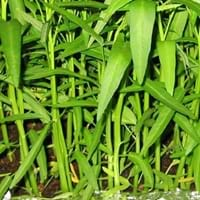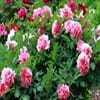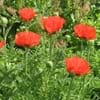Life Span
Perennial
Annual and Perennial
Type
Flowering Plants, Herbaceous Perennial
Aquatics
Types
Bowl of Beauty, Laura Dessert
Not Available
Habitat
Dappled Shade, Woodland Garden
subtropical regions, Tropical regions
USDA Hardiness Zone
4-8
8-15
Sunset Zone
A3, 1a, 1b, 2a, 2b, 3a, 3b, 4, 5, 6, 7, 8, 9, 10, 11, 12, 13, 14, 15, 16, 17, 18, 19, 20, 22
21,22
Habit
Clump-Forming
Spreading
Flower Color
White, Light Pink
White, Lavender
Flower Color Modifier
Bicolor
Not Available
Fruit Color
Not Available
Green, Reddish Plum
Leaf Color in Spring
Red, Dark Green, Bronze
Green
Leaf Color in Summer
Green, Dark Green
Green
Leaf Color in Fall
Green, Dark Green, Bronze
Green
Leaf Color in Winter
Not Available
Green
Leaf Shape
Lance shaped
Long Elliptic
Plant Season
Spring, Summer
Spring, Summer, Fall, Winter
Sunlight
Full Sun, Partial Sun
Full Sun, Partial Sun
Growth Rate
Slow
Very Fast
Type of Soil
Clay, Loam, Sand
Clay, Loam, Sand
The pH of Soil
Acidic, Neutral, Alkaline
Acidic, Neutral, Alkaline
Soil Drainage
Well drained
Poorly Drained
Bloom Time
Late Spring, Early Summer
Indeterminate
Tolerances
Not Available
Wet Site
Where to Plant?
Ground
Container, Ground, Pot
How to Plant?
Root Division, Seedlings
Seedlings
Plant Maintenance
Medium
Medium
Watering Requirements
Allow soil to be completely dry in between waterings, Water Deeply
Requires regular watering
In Summer
Lots of watering
Lots of watering
In Spring
Moderate
Moderate
In Winter
Average Water
Average Water
Soil pH
Acidic, Neutral, Alkaline
Acidic, Neutral, Alkaline
Soil Type
Clay, Loam, Sand
Clay, Loam, Sand
Soil Drainage Capacity
Well drained
Poorly Drained
Sun Exposure
Full Sun, Partial Sun
Full Sun, Partial Sun
Pruning
Remove damaged leaves, Remove dead branches, Remove dead leaves
Remove damaged leaves, Remove dead branches, Remove dead leaves
Fertilizers
5-10-10 fertilizer
All-Purpose Liquid Fertilizer
Pests and Diseases
Leaf Blotch, Ringspot virus, Stem rot, Tip blight, Verticillium Wilt
Bacterial leaf spot, Damping-off, Root rot
Plant Tolerance
Drought
Drought
Flower Petal Number
Double
Single
Foliage Texture
Coarse
Medium
Foliage Sheen
Glossy
Matte
Attracts
Ants, Butterflies, Not Available
Birds, Hens
Allergy
no allergic reactions
Not Available
Aesthetic Uses
Cut Flowers, Showy Purposes
Farmland
Beauty Benefits
Not Available
Not Available
Environmental Uses
Air purification
Air purification
Medicinal Uses
Alterative, Analgesic, Anodyne, anti inflammatory, Antibacterial, Antiseptic, Hypotensive, Tonic
Anti-ageing Benefits, Antidiabetic, Reduces toothache, Skin Diseases
Part of Plant Used
Root, Seeds, Stem
Leaves, Shoots, Stem
Other Uses
Eaten in a broth, Powdered and mixed with tea
Used in curries, soups, stews
Used As Indoor Plant
Yes
Sometimes
Used As Outdoor Plant
Yes
Yes
Garden Design
Cutflower, Feature Plant, Foundation, Mixed Border
Edible, Herb / Vegetable, Tropical, Water Gardens
Botanical Name
PAEONIA lactiflora 'Shirley Temple'
IPOMOEA aquatica
Common Name
Double Pink Peony, Garden Peony
Swamp Cabbage, Swamp Morning Glory, Water Spinach
In Hindi
Double Pink Peony
Water Spinach
In German
Doppelte rosa Pfingstrosen
Wasser-Spinat
In French
Double Rose pivoine
Épinards d'eau
In Spanish
Doble Pink Peony
La espinaca de agua
In Greek
Διπλό Ροζ Παιωνία
Σπανάκι νερό
In Portuguese
Duplo Pink Peony
Espinafre de água
In Polish
Podwójne Pink Peony
Szpinak wodny
In Latin
Geminus Pink AGLAOPHOTIS
Water Spinach
Phylum
Magnoliophyta
Spermatophyta
Class
Magnoliopsida
Magnoliopsida
Order
Dilleniales
Solanales
Family
Paeoniaceae
Convolvulaceae
Clade
Angiosperms, Core eudicots, Eudicots
Angiosperms, Asterids, Eudicots
Tribe
Not Available
Ipomoeeae
Subfamily
Not Available
Not Available
Number of Species
Not Available
Season and Care of Double Pink Peony and Water Spinach
Season and care of Double Pink Peony and Water Spinach is important to know. While considering everything about Double Pink Peony and Water Spinach Care, growing season is an essential factor. Double Pink Peony season is Spring and Summer and Water Spinach season is Spring and Summer. The type of soil for Double Pink Peony is Clay, Loam, Sand and for Water Spinach is Clay, Loam, Sand while the PH of soil for Double Pink Peony is Acidic, Neutral, Alkaline and for Water Spinach is Acidic, Neutral, Alkaline.
Double Pink Peony and Water Spinach Physical Information
Double Pink Peony and Water Spinach physical information is very important for comparison. Double Pink Peony height is 90.00 cm and width 90.00 cm whereas Water Spinach height is 12.70 cm and width 610.00 cm. The color specification of Double Pink Peony and Water Spinach are as follows:
Double Pink Peony flower color: White and Light Pink
Double Pink Peony leaf color: Red, Dark Green and Bronze
Water Spinach flower color: White and Lavender
- Water Spinach leaf color: Green
Care of Double Pink Peony and Water Spinach
Care of Double Pink Peony and Water Spinach include pruning, fertilizers, watering etc. Double Pink Peony pruning is done Remove damaged leaves, Remove dead branches and Remove dead leaves and Water Spinach pruning is done Remove damaged leaves, Remove dead branches and Remove dead leaves. In summer Double Pink Peony needs Lots of watering and in winter, it needs Average Water. Whereas, in summer Water Spinach needs Lots of watering and in winter, it needs Average Water.





